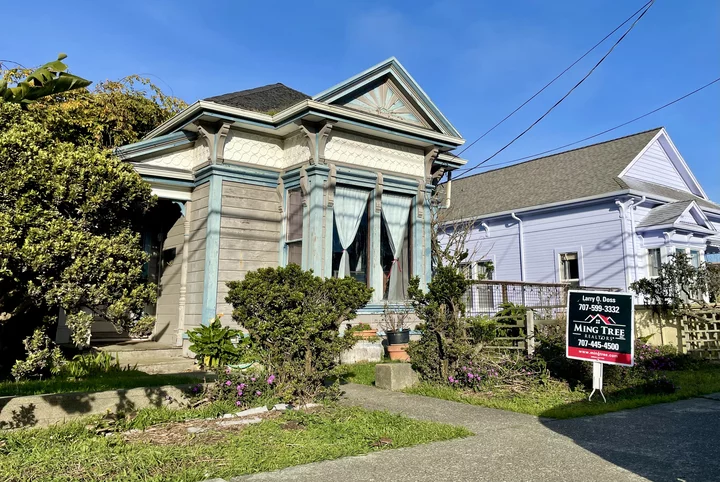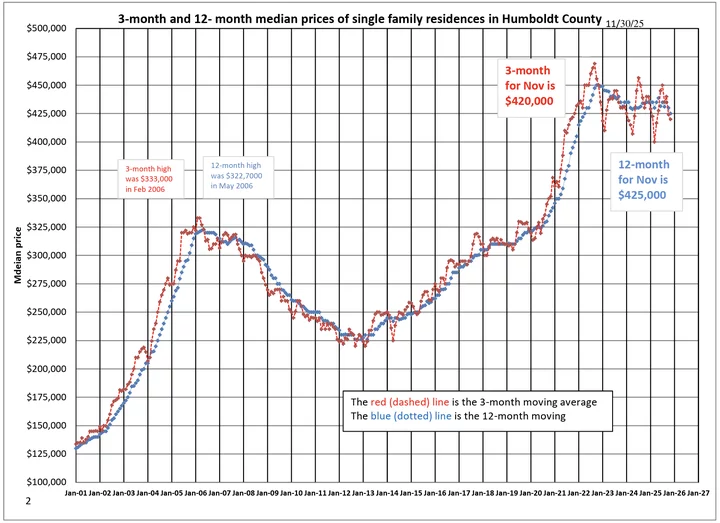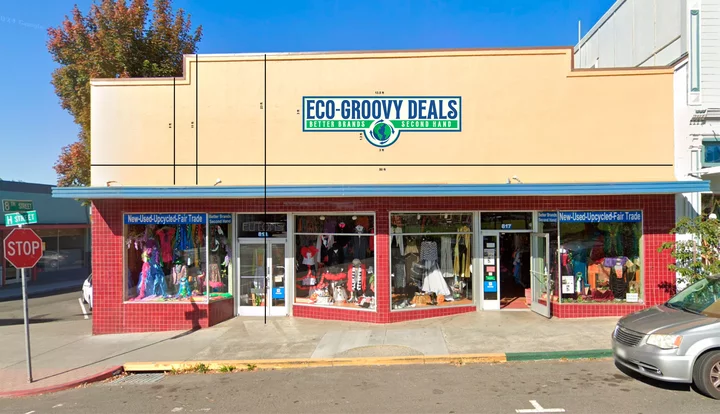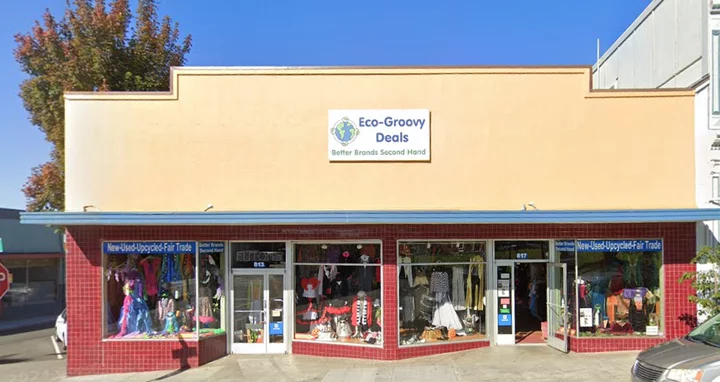OBITUARY: Charles Francis Bounds, 1942-2025
LoCO Staff / Tuesday, Dec. 9, 2025 @ 6:56 a.m. / Obits
Charles Francis Bounds
July
11, 1942 – November 23, 2025
Born in Ashland, Oregon, to Charles and Melba Bounds, Charles grew up in his father’s auto shop, where he discovered his gift for mechanics. That gift became a lifelong career in the automotive industry, as he eventually purchased Trinity Auto Repair in Willow Creek.
Charles served his country in Vietnam. He served his community with his hands. But the greatest chapter of his life was his love story with Carol. They married, built a family, and though life took them in different directions, God brought them back together. They remarried, and their later years overflowed with laughter, devotiacon, and the joy of children, grandchildren, great-grandchildren, and a great-great-grandchild.
Charles was more than a mechanic — he was an artist who loved to draw, a jokester who loved to tease, and a grandfather who filled his family’s lives with laughter.
He is survived by his wife, Carol; daughters Cynthia McAuley, Chellyn Bowser, and Tracey Hamby; and his sister Judy Buchanan. He was preceded in death by his son, Michael Bounds, and a nephew. He leaves behind a large and loving family, including grandchildren Justin, Tim, Danielle, Victoria, Carlyn, Joel, Valarie, Neil, Ross, Jessicah, Kaden, Brenna, Jacob, Charlee, Emily, and Arthur, as well as many great-grandchildren, a great-great grandchild, nieces and extended family members.
His story is one of service, artistry, humor and above all, love. He taught us that true love can endure distance and time, that laughter is a gift worth sharing, and that family is the greatest treasure of all.
Charles will be laid to rest December 15, 2025, at Eagle Point National Cemetery, joining his parents.
###
The obituary above was submitted on behalf of Charles Bounds’s loved ones. The Lost Coast Outpost runs obituaries of Humboldt County residents at no charge. See guidelines here.
BOOKED
Today: 12 felonies, 20 misdemeanors, 0 infractions
JUDGED
Humboldt County Superior Court Calendar: Friday, Jan. 9
CHP REPORTS
2542 Quinlan Ave (HM office): Traffic Hazard
Sr255 / V St (HM office): Live or Dead Animal
E Washington Blvd / Summer Ln (HM office): Defective Traffic Signals
ELSEWHERE
Washington Post: A woman’s life among black bears taught her a lot about being human
Washington Post: Trump’s college agenda may have a lasting impact on research, culture
AP News: Iran warns against US strikes as activists say protest death toll reaches 203
The Atlantic: The Most Shouted-At Politician in America
Humboldt County Has the Nation’s Second-Riskiest Housing Market, Industry Report Finds
Ryan Burns / Monday, Dec. 8, 2025 @ 4:13 p.m. / Economy
A home for sale on Second Street in Eureka. | Photo by Ryan Burns.
###
Buying a home in Humboldt County is a dangerous investment — at least according to the real estate analytics company ATTOM.
The private equity-backed firm, which claims to be “passionate about real estate data,” recently released its latest U.S. Housing Risk Report, which ranks Humboldt County at #2 on its list of the riskiest housing markets in the U.S. The top spot on the risk list went to our NorCal neighbor Butte County. El Dorado and Shasta counties also made the top five.
What do these rankings mean? Well, a post on the company’s website says they’re based on an assessment of vulnerability in county-level housing markets during last fiscal quarter. The rankings are based on a variety of factors, including relative home affordability, equity levels and unemployment rates. (And apparently only 580 of the nation’s 3,000-plus counties have sufficient data to analyze in this way.)
The Outpost obtained a copy of the data ATTOM compiled for its report. Humboldt’s report card came in as follows:
- 50.2% of income needed to buy
- 3.1% of properties underwater
- 1 in every 803 properties with foreclosure filings
- 6.1% July 2025 unemployment rate
The figure that immediately jumps out is the 50.2 percent. That’s how much of the county’s median income you’d have to spend each month in order to afford the median-priced home here. Experts typically recommend spending no more than 30 percent of your gross income on housing.
The “underwater” figure represents properties where the amount owed is more than it’s worth. It’s a safe guess that the collapse of our local cannabis industry has influenced that number here.
Meanwhile, the county’s unemployment rate in July (which is the most recent data we have, thanks to the federal government shutdown) was 6.1 percent. That’s equal to the statewide rate but higher than the national rate of 4.6 percent, according to the California Employment Development Department.
ATTOM’s analysis found that 16 of the 50 highest-risk markets were located in California. Your real estate investments are safer in Wisconsin, Tennessee and Montana, according to the report, which doesn’t address matters of living quality and natural beauty.
Local realtor and seasoned number-cruncher Charles McCann releases his own regular reports on local real estate trends, as represented in a series of graphs. His latest report was just issued this morning, and it includes the chart below. It reveals that local housing prices, which spiked during the pandemic, have since stalled.
Median price of single-family residences in Humboldt County over time. | Graph via Charles McCann. Click here to download a pdf.
###
As you can see, since peaking in late 2022, prices have been on a slight downward trajectory, albeit with a lot of seasonal volatility.
If you’re looking for a bit of good news, the number of home sales in Humboldt County has been on the rise over the past two years, as shown in the chart below.
Chart via Charles McCann. Click here to download a pdf.
###
ATTOM CEO Rob Barber is quoted in a post on his company’s website last week as saying, “A lot of attention has, deservedly, gone to affordability concerns stemming from the rising price of homes. But what really separated the riskiest markets in our third quarter assessment were their high rates of foreclosures and unemployment.”
“If a community is losing jobs, those homeowners will find it harder to pay their monthly mortgage bills,” he added. “That means more foreclosures, which can hurt the broader local housing market.”
But Humboldt County’s unemployment rate has remained fairly stable over the past year or so. (It rose just 0.3 percent since August of 2024.)
Given that Humboldt County ranked among the nation’s hottest real estate markets as recently as 2021, we should probably take all these charts and rankings with a grain of salt. And if our conversations with real estate agents over the years have taught us anything, it’s that now is always a great time to buy.
NPR Visits Eureka to Learn What’s Next for Offshore Wind, as China Leads the Charge in Green Energy Development
Isabella Vanderheiden / Monday, Dec. 8, 2025 @ 2:44 p.m. / Energy , Media , Offshore Wind
A digital rendering of the fully built-out Humboldt Bay Offshore Wind Heavy Lift Marine Terminal. | Image: Humboldt Bay Harbor District
###
Since President Donald Trump took office in January, his administration has launched an all-out attack on the offshore wind energy sector, issuing stop-work orders for near-complete projects on the East Coast and canceling hundreds of millions of dollars in federal funding for other proposed projects, including more than $435 million earmarked for Humboldt County.
In a recent segment on National Public Radio, climate solutions correspondent Julia Simon speaks with Chris Mikkelsen, executive director of the Humboldt Bay Harbor District, about how the loss of federal funding is reshaping the district’s plans for a heavy-lift marine terminal that would support the offshore wind project planned 20 miles west of Eureka.
In an at-times emotional interview, Mikkelsen told Simon that the port development project, which was supposed to be shovel-ready as soon as 2026, would “change the economic viability of our community.”
“Now we’ve been on pause since we got the news in August, we’ve been pencils down,” Mikkelsen told NPR. “It very much contributed to the delay.”
On his first day in office, President Trump fulfilled a long-held promise to block new offshore wind development in the United States, issuing a sweeping Executive Order to halt leasing and permitting for new projects slated for the outer continental shelf.
Still, Mikkelsen told NPR he was confused as to why the administration decided to pull the federal grant funding, noting that Trump “really ran on a platform that we’re gonna build back America. That we’re gonna create jobs in rural America. Good, skilled, trained, high-paying jobs.”
With the U.S. backtracking on renewable energy investments, China is now leading the global renewable energy sector. NPR correspondent Anthony Kuhn explains:
In the first half of this year, China built more solar than the rest of the world combined. China accounts for 74% of all large scale solar and wind under construction, according to the nonprofit Global Energy Monitor. … More than a quarter of China’s economic growth in 2024 came from wind, solar and battery technologies, according to the Centre for Research on Energy and Clean Air, a nonprofit. Energy experts say it’s too early to know the full impact of the Trump administration’s anti-renewable policies, but in the first half of 2025, U.S. renewable investment fell by 36%.
You listen to the full interview below.
###
PREVIOUSLY:
- Harbor District Announces Massive Offshore Wind Partnership; Project Would Lead to an 86-Acre Redevelopment of Old Pulp Mill Site
- Offshore Wind is Coming to the North Coast. What’s in it For Humboldt?
- ‘Together We Can Shape Offshore Wind for The West Coast’: Local Officials, Huffman and Others Join Harbor District Officials in Celebrating Partnership Agreement With Crowley Wind Services
- Humboldt Harbor District Officials Talk Port Development As Offshore Wind Efforts Ramp Up
- Harbor District Responds to Crowley Controversy, Commits to the ‘Highest Ethical Standards’
- LoCO Interview: The Outpost Talks to Crowley Executives About Recent Allegations of Misconduct, Port Development on the Samoa Peninsula and the Company’s Future in Humboldt
- (UPDATE) Huffman Announces $8.7 Million Federal Grant Toward Offshore Wind Port Development
- Harbor District Commissioners to Discuss Extended Partnership Agreement with Crowley Wind Services During Tonight’s Meeting
- WHOA: Rep. Huffman’s Office Teases $426 Million Federal Grant for Offshore Wind Terminal, to be Announced Tomorrow
- (PHOTOS) The Biggest Federal Grant in Humboldt History? Huffman, Assorted Worthies Gather on Woodley Island to Celebrate $426 Million in Infrastructure Funding for Offshore Wind
- At a Two-Day Conference in Eureka This Week, North Coast Tribes Advocate for ‘Meaningful Engagement’ With Offshore Wind Developers, Federal Regulators
- (VIDEO) See What Wind Turbine Assembly Would Look Like on Humboldt Bay, Courtesy of This Presentation From the Harbor District
- Did You See That Big Ship in Humboldt Bay Last Week? That’s the Vessel Mapping the Seabed and Collecting Data for Offshore Wind Development
- INTERVIEW: Harbor District Outlines Next Steps for Offshore Wind Development on the North Coast
- INTERVIEW: Rep. Huffman on Trump’s Offshore Wind Ban
- (UPDATE) Trump Administration Pulls Funding for ‘Fantasy Wind Projects,’ Including $426 Million Grant for Humboldt Bay Offshore Wind Terminal
- Harbor District Nabs $18.25M State Grant for Planned Offshore Wind Heavy Lift Marine Terminal
- ‘The Gift of Time’: Offshore Wind Advocates See Trump Administration’s Pushback Against the Industry as a Possible Opportunity
Eco-Groovy Asks Planning Commission to Allow Signage Enlargement
Dezmond Remington / Monday, Dec. 8, 2025 @ 11:35 a.m. / Business
A mockup of the proposed signage on H Street. Image from the planning commission’s report.
The view from the Arcata Plaza might look a little different soon if the Arcata Planning Commission decides to allow clothing and home-good reseller Eco-Groovy Deals to triple their signage on their H Street storefront at their meeting tomorrow.
Their current 20-square-foot sign takes up a small fraction of the 50 by 10-foot façade. If permitted, Eco-Groovy would swap the smaller sign out for a 44-square-foot aluminum sign on the façade. They’d also add another 16 square feet of vinyl signage on the street-level windows.
The proposed signage meets all of the city’s rules regulating design standards except for its size.
Eco-Groovy needs permission from the commission because the planned 60 square feet of signage exceeds the 20-foot maximum Arcata allows for businesses. The storefront is one of the largest on the plaza; two lots were combined in 2020 to form one 50 by 115-foot parcel, and Eco-Groovy is the only tenant. The planning commission agrees that the current sign on the façade appears “disproportionately small.”
“The sign’s materials, scale, and placement are consistent with the character of plaza signage,” reads the city’s staff report, “and do not detract from the architectural cohesion of the immediate neighborhood.”
The current sign. From Google Maps.
There’s a New Podcast About the Timber Wars and the Judi Bari Story, and It’s Pretty Darned Good
Hank Sims / Monday, Dec. 8, 2025 @ 11:10 a.m. / Media
If you’re in the mood to take a walk down Humboldt memory lane this month, you could do much worse than to check out the new season of Rip Current, a podcast written and produced by crime writer Toby Ball and published by iHeartRadio. It rewinds the clock 35-odd years — very odd years — to revisit the Timber Wars, Maxxam’s takeover of Pacific Lumber, the lead-up to Redwood Summer and, of course, the still-unsolved car bombing of Earth First! activists Judi Bari and Darryl Cherney.
Your Lost Coast Outpost — who, full disclosure, was interviewed for the project — was pretty skeptical of the thing when it was announced, having pretty strong distaste for the whole “true crime” genre that has taken over all forms of media.
But Ball’s podcast doesn’t rubberneck at acts of violence, as so many of these things do. He goes very deep into the culture of the Emerald Triangle in the late 1980s, from both the hippie and the redneck sides. He has an episode on the Bari’s history as a labor organizer, and another on the Maxxam acquisition. He has a very interesting interview with an architectural historian who talks about the role of North Coast redwood in the building of the West Coast.
In short, it’s a podcast about local history, and Ball has put in the work. Five episodes have been published so far, and along with historical audio he unearths from the vaults Ball has fresh interviews with a bunch of key people: Mike Geniella, the veteran Ukiah journalist who played a big role in the story; Larry Livermore, the founder of Lookout! Records who was publishing a magazine in the hills above Laytonville at the time; and Crawdad Nelson, the Fort Bragg poet and millworker. Among others.
Highly recommended. Check it out.
Rio Dell Man Wanted on Domestic Violence Charges Found in Possession of an Arsenal and Law Enforcement Patches
LoCO Staff / Monday, Dec. 8, 2025 @ 10:02 a.m. / Crime
UPDATE, 10:19 a.m.:
Curious about the origin and legal implications of the law enforcement agency patches referenced in this press release, we reached out the the Rio Dell Police Department with a couple of follow-up questions. Chief Josh Phinney promptly responded:
We do not know how he obtained the patches. While it is not illegal to possess patches as many collectors do, it is illegal to use Law Enforcement Agency patches to pose as a member of law enforcement.
Agencies with whom the patches belong to have been notified to determine if they have any reported crimes in their jurisdictions that would match this equipment being used in the commission of a crime.
###
Original post:
Photo via RDPD.
###
Press release from the Rio Dell Police Department:
On December 7, 2025, Rio Dell Police Department officers arrested Justus Arreguin (DOB 07/17/1995) on the 4100 block of Grizzly Bluff Rd. in Ferndale for an outstanding warrant related to a prior Domestic Violence investigation.
During the arrest, officers observed multiple firearms in Arreguin’s possession. Based on those observations, RDPD obtained a search warrant for the residence and associated property. The subsequent search resulted in the seizure of numerous rifles, handguns, firearm magazines, and substantial quantities of ammunition.
Also located and seized was a tactical vest equipped with multiple high-capacity magazines, a TASER-style device, handcuffs, zip ties, and uniform patches, including a Sacramento County Sheriff’s Office patch and Humboldt County Sheriff’s Office patches. These items were taken as evidence pending further review and investigation.
Arreguin was transported and booked into the Humboldt County Correctional Facility for the outstanding warrant and the following additional violations:
- 29805(a) PC – Prohibited Person in possession of a firearm
- 32310(a) PC – Possession of large-capacity magazines
- 11377(a) HS – Possession of a controlled substance
- 273.6(a) PC – Violation of a court order
The Rio Dell Police Department would like to thank the Humboldt County Sheriff’s Office for their assistance in ensuring the safe arrest of Arreguin. Their support helped bring the situation to a safe and orderly conclusion.
The investigation remains ongoing. Anyone with additional information relevant to this case is encouraged to contact Corporal Landry with the Rio Dell Police Department at (707) 764-5642 or landryc@cityofriodell.ca.gov.
Data Centers for AI Could Nearly Triple San Jose’s Energy Use. Who Foots the Bill?
Alejandro Lazo / Monday, Dec. 8, 2025 @ 8:05 a.m. / Sacramento
Photo by Brett Sayles via Pexels.
###
This story was originally published by CalMatters. Sign up for their newsletters.
###
San Jose, the symbolic capital of Silicon Valley, is now ground zero in California’s battle over how to govern the rise of data centers used to power artificial intelligence.
The county seat of Santa Clara is touting its partnership with Pacific Gas & Electric, claiming the city is “the West Coast’s premier destination for data center development.” The investor-owned utility now estimates it has enough capacity in its planning pipeline to push the city’s electricity use to almost three times its current peak.
Those plans are forcing major grid upgrades, PG&E and city officials say, while raising questions about who pays for them and whether the state can keep the power clean.
Panelists at a CalMatters event in downtown San Jose clashed over key issues. They included a local official working with PG&E on the city’s data-center buildout, a tech advocate urging California to seize the economic moment, a Stanford energy expert pressing for a more modernized grid and a utility watchdog skeptical of AI’s promised benefits.
Their discussion centered on how quickly California should move to accommodate new demand, what information the public should be entitled to and how to keep customers from shouldering the cost of infrastructure that may never be fully used.
Proposals to more strictly regulate data center development died in the Legislature this year. Going forward, several state agencies and commissions are expected to take up further discussions, including the California Energy Commission, the Little Hoover Commission and the California Public Utilities Commission.
How much energy will California’s new data centers actually need?
The surge in AI is complicating efforts by regulators and utilities to forecast how quickly data centers will grow and how much power they’ll need. Companies can propose large facilities without committing to build them, the computing demands behind AI are changing quickly and cooling needs vary across the state. These factors make long-term energy needs hard to pin down.
According to the state’s electricity-demand forecast, utilities report that data centers, in planning documents, have requested 18.7 gigawatts of service capacity. That’s enough to power roughly 18 million homes, compared with California’s estimated 14 to 15 million. Regulators don’t expect all of those projects to be built, and assume the ones that do will come online gradually and operate at less than their requested capacity, producing a forecast of between 4 and 6 gigawatts by 2040.
Liang Min, who directs Stanford’s Bits & Watts Initiative, and a speaker on CalMatters’ panel, said that forecasting is particularly tough because companies are rolling out new AI apps — or “application layers,” as he put it — at breakneck speed. They include products like ChatGPT that use large language models. No one knows which apps will take off, and those uncertain bets are driving huge demands on the power grid.
“Right now we’re really struggling,” Min said. “The risk is extremely high in the application layers.”
The Public Advocates Office, an independent consumer watchdog within the California Public Utilities Commission, recently warned that rapid data-center growth could leave Californians paying for billions of dollars in grid upgrades if projects never materialize or use far less power than promised.
“Ratepayers could end up paying for costly infrastructure upgrades that may not be needed for many years – or at all,” the office said in its commentary.
Min said forecasting data-center load is a national challenge, but California will need better tools to keep rates in check, meet its clean-energy targets and stay competitive with states racing to attract data centers and high-paying tech jobs.
Local officials have also begun to grapple with the uncertainty. In San Jose, city energy officials say they are reluctant to procure additional power until they know which projects will actually be built. “We do not want to buy more power than we need,” said panelist Lori Mitchell, director of San Jose Clean Energy, the city’s publicly-owned electricity provider. “That’s job No. 1.”
What are the environmental concerns around the data center boom?
California’s data-center boom is bringing a wave of environmental concerns that state officials are only beginning to understand. Those concerns center on water use, the carbon emissions tied to rising energy demand and the air pollution from diesel backup generators.
Air quality is a particular concern. While back-up generators run only intermittently, their presence is concentrated in a handful of regions. In Santa Clara County, where many facilities sit close together in dense industrial areas, the local impacts could be greater simply because so much equipment is packed into a small space.
Yet the state still has limited visibility into what data centers are doing. Attempts to require more transparency stalled this year amid tech industry opposition. The only measure that became law gives regulators the authority to determine whether data centers are driving up costs — but stops short of requiring environmental reporting.
Ahmad Thomas, CEO of the Silicon Valley Leadership Group, and another panelist, said his group opposed the electricity disclosure and water reporting measures because they would make California less competitive.
“It’s very hard to see a world where California is at the top of the AI pile if we do not have an approach to data centers that is — at minimum — mildly competitive with other states,” he added.
Consumer advocates say the lack of information leaves communities unprotected. “We certainly think there needs to be more transparency — that’s a good thing,” said panelist Mark Toney, the executive director of the The Utility Reform Network, a ratepayer advocacy group..
Will data centers slow down California’s switch to clean energy?
The rapid growth of data centers could slow California’s clean-energy transition if it keeps the state tied to natural gas. And some of the carbon-free alternative energy sources that could meet their power needs are deeply controversial among environmentalists.
The state has pledged to reach 100% carbon-free electricity by 2045, yet it still depends heavily on natural-gas plants during hot summer days. A recent report by the environmental think tank Next 10 and UC Riverside estimated that data-center carbon emissions nearly doubled from 2019 to 2023 — largely from gas-fired generation — underscoring how even a relatively clean grid may struggle to absorb AI-driven load without higher emissions.
State leaders are making policy shifts as AI demand grows. California this year approved joining a broader Western power market, a move driven in part by new demands on the grid, including data centers. Critics warn the change could expose the state to dirtier electricity from other states and weaken its control over clean-energy rules.
Min of Stanford argues that California will need to rely on options some environmentalists would rather avoid. That includes holding onto existing resources like the Diablo Canyon nuclear plant. In a recent report, Min argued the state will also need more “clean, firm” power — resources that can operate around the clock — such as geothermal energy or natural-gas plants with carbon capture.
PG&E agrees. Spokesperson Stephanie Magallon told CalMatters in an email that nuclear power, carbon-capture systems and large solar-plus-battery projects are all options under consideration for powering data centers in its region. But environmental justice critics in California have opposed carbon capture technology calling it unproven tech that risks extending fossil-fuel use.
Mitchell said community choice aggregators can manage new data-center load while keeping power clean and affordable. San Jose’s mix is already 60% renewable, and she said the biggest opportunity is flexibility — getting data centers to shift use off the hottest afternoons so the city can avoid buying additional power.
Will data centers raise your electric bill?
California’s data-center boom is reshaping the fight over electricity bills, exposing a divide over whether these new customers will lower costs — or drive them higher for everyone else.
PG&E argues that adding large users like data centers can lower rates because fixed grid costs would be spread across more customers. It also claims the grid is underutilized on average — operating at about 45% of capacity — although the grid faces real strain during the hottest hours and in parts of the system that routinely run close to their limits. If data centers can be connected in places with available capacity, PG&E argues, they could help spread costs without worsening congestion.
Toney, another panelist, urged the state to slow down, warning that California is planning major infrastructure without knowing which data centers are real or how their costs will land on customer bills.
“I’m worried that we’re engaged in what I call faith-based policymaking,” he said. “The benefits are very speculative, but the costs are very real.”
Some states, said Toney, have begun tightening rules around the growth of data centers. One law in Oregon will require data-center grid costs to remain off household bills. A Minnesota law will give very large data centers their own billing category so regulators can keep their costs separate from other customers’ electric bills.
“This issue of data centers and the connection between affordability and clean energy is of national concern, and California is actually behind on this,” Toney said. “There’s this mythology about California being the leader all the time.”










